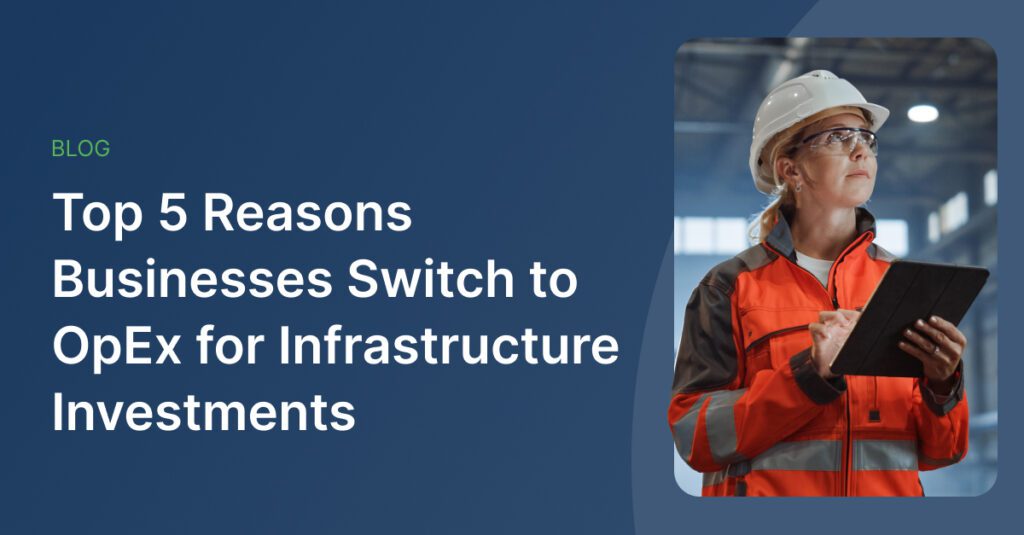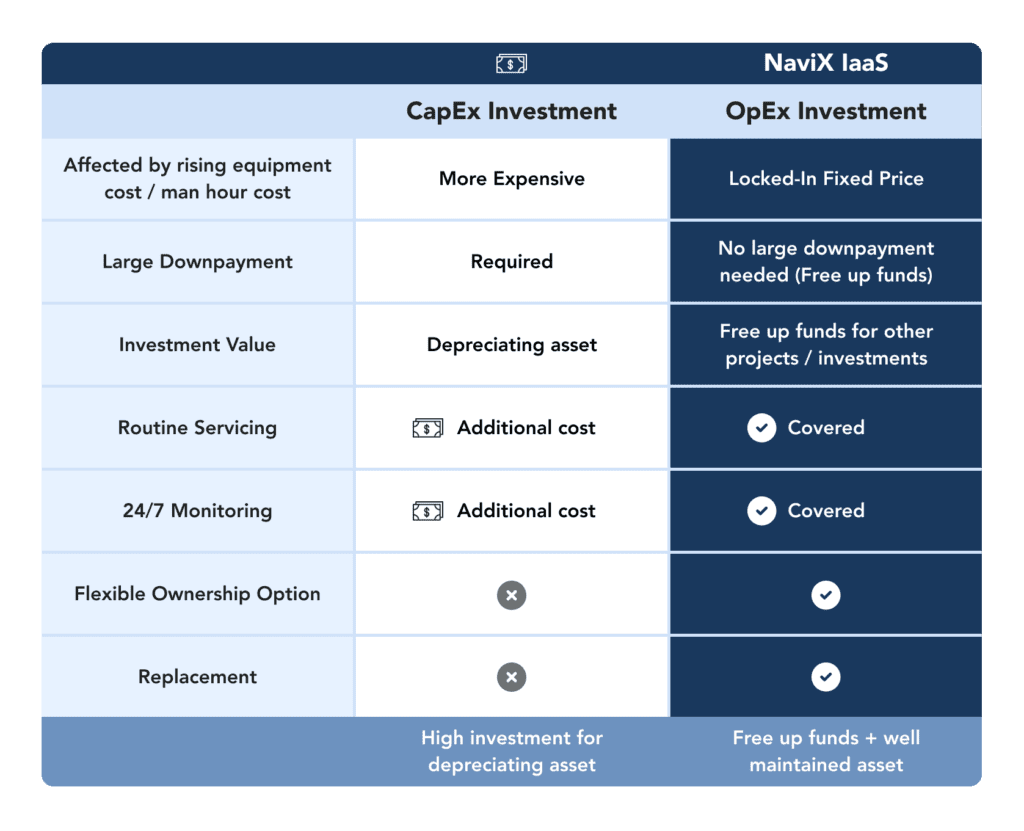
Top 5 Reasons Businesses Switch to OpEx for Infrastructure Investments
In an era driven by technological innovation and sustainability imperatives, Mechanical and Electrical (M&E) infrastructure management has become more critical than ever. Whether it is optimizing energy efficiency, enhancing equipment reliability, or ensuring compliance with ever-evolving regulations, these require significant investments in mission-critical business areas. Such spending could come in the form of either capital expenditure (CapEx) or operating expenditure (OpEx).
CapEx vs OpEx

Capital expenditure (CapEx) always constitute of a substantial upfront cost which is capitalized on the balance sheet, and thereafter depreciated over the typical useful life of the equipment. CapEx models tend to be expensive since they require one-time purchase(s) and you would expect to reap the benefits over the years. By allocating more of your budget to CapEx means lesser cash resources for other projects and investments.
Operating expenditure (OpEx) models offer a cost-effective and flexible alternative to CapEx models since they typically do not require any upfront payment. This approach involves the leasing of infrastructure assets, which includes essential maintenance services and necessary upgrades.
Low Starting Cost
Businesses are able to significantly reduce upfront expenses with Infrastructure-as-a-Service (IaaS), which is an OpEx model for infrastructure investments. This is exceptionally useful for businesses that require advanced technology, hardware and services or business that are going through equipment lifecycle retrofits, allowing the reprioritisation of precious resources back to the core business.
Scalability
The Infrastructure-as-a-Service (IaaS) model helps businesses to adapt to the ever-changing economical landscape. As businesses grow, infrastructure assets might need expand exponentially. CapEx constraints could, as a result, limit business growth.
For example, critical cooling is one of the most capital-intensive requirements in data centre operations. Under a CapEx model, if the cooling system is not well-planned, the data centre will not be able to hold or scale the expected amount of IT infrastructure. Conversely, if the cooling system is over specified, it will become a costly and inefficient liability for the business. By shifting from CapEx to OpEx, businesses are able to adapt and respond quickly to the changing demands and ensure that their infrastructure remains true to their operations.
Technology Advancement
When businesses choose Infrastructure-as-a-Service (IaaS), they immediately unlock a wider access to the latest assets and services offered, which are robust and are constantly improving. NaviX updates and upgrades these infrastructure assets to ensure the assets are running at optimal level.
Maintenance Outsourcing
Operations & Maintenance (O&M) forms part of the Infrastructure-as-a-Service model, allowing businesses to reduce their responsibility for continued maintenance. This frees up internal resources to support the core business instead of worrying about backups, operating system upgrades, IT support and repairs.
No Depreciation
M&E equipment like EV Charging Stations, Uninterruptible Power Supply (UPS), loses value over time. In a CapEx model, business have to take note on depreciating assets and the asset becoming obsolete or outdated over the years. With Infrastructure-as-a-Service (IaaS), assets will be upgraded and maintained, thus ensuring optimal performance as it is required.
Switch from CapEx to OpEx
Making the switch from CapEx to OpEx can provide several benefits for businesses. OpEx model offers businesses the flexibility and adaptability in this challenging and rapidly evolving market. It is critical that businesses carefully consider their specific needs and goals when making the decision between CapEx and OpEx. By understanding the differences in both models, businesses can better allocate resources and increase profitability.
Speak to us today – we’ll be delighted to assist you in your CapEx to OpEx transition.
